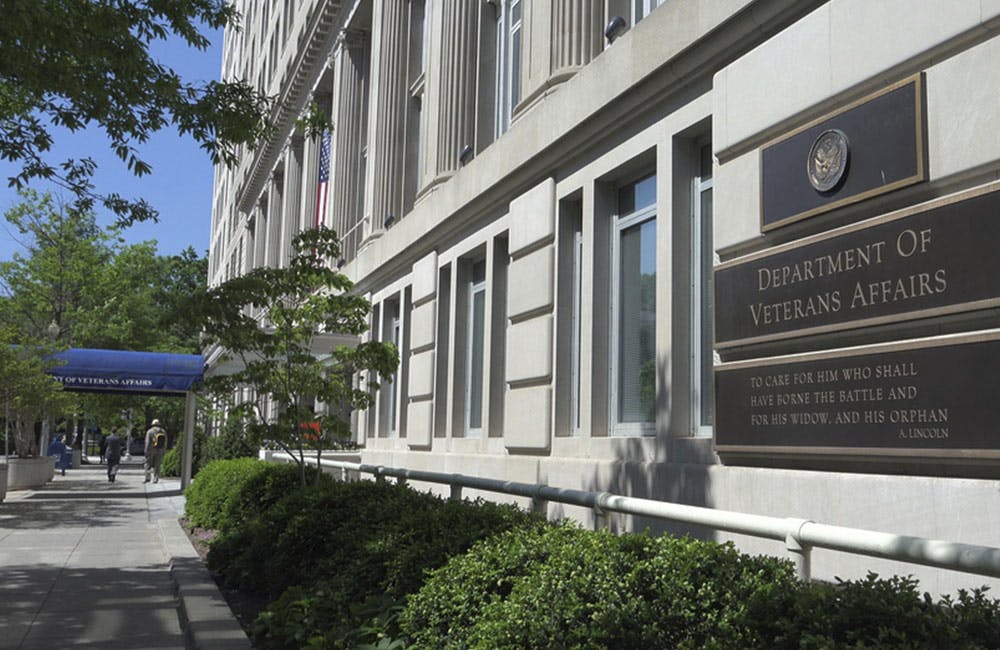DHS Tabs Cyber and AI as Innovation R&D Priorities
The agency’s plan utilizes AI to better address future threats, secure critical infrastructure and improve workforce efficiency.

Homeland Security leaders ranked cybersecurity and artificial intelligence as its top two priorities for their cross-cutting needs and efforts five months after releasing its Innovation, Research and Development Strategic Plan.
Agency leaders set up eight working groups to rank the strategic priority research areas that also included areas like biotechnology and advanced sensing.
“The cybersecurity identified a lot of cross-cutting focus areas like resiliency analytics, information sharing software and hardware assurance,” said Jonathan McEntee, Operations and Requirements Analysis Director for the Science and Technology Directorate at DHS. “And with the AI and autonomous systems, we looked at infrastructure and enablement, big data and machine learning, risk and oversight and overall workforce improvement, how can we better utilize AI to improve how we do our positions.”
McEntee said the IRD Strategic Plan offers a demand signal to industry, international, interagency and academia partners on these needs through fiscal year 2030.
“The plan was built on this robust cross component from a technological level setting standpoint, but also on interoperability, which is very critical in the department especially where we have components that work on key missions together,” said McEntee.
DHS spent eight months inventorying its current IRD activities and looked at how it’s going to start implementing technology, long-term planning, as well as thinking ahead of those threats and taking steps to be better prepared by FY2030.
Investment Roadmap
The agency is already starting to identify how they’re going to achieve the objectives of IRD. McEntee said the main goal over the next year is to develop roadmaps of investments, putting these ideas in place across the agency and better understanding where everybody is investing in technology.
“What is Coast Guard doing with regards to AI and autonomous systems? What are we doing in that? What is CISA doing? And so that helps us to identify who’s doing what, and then it helps us to better identify what we call IRD deltas, which are the holes as we build the road map of who’s investing in what over the next six to seven years and who’s not investing in this particular portion of AI and autonomous systems,” said McEntee. “We need to better collaborate on this and then that will help us better determine where we need to be.”
McEntee said DHS is also excited to explore how it can utilize AI as a force multiplier to advance individual capabilities and optimize existing resources, AI communities and vendors.
“AI is going to play a major role in several of our strategies, especially in data analytics and decision support systems and capabilities, because a lot of these can help create efficiencies and operational optimization,” said McEntee. “It’s going to help us free up our workforce so that they can focus on higher priority missions and mitigate as well with the deployment of new capabilities.”
This is a carousel with manually rotating slides. Use Next and Previous buttons to navigate or jump to a slide with the slide dots
-

VA's Platform One Powers Rapid Innovation to Bolster Digital Services
VA's Platform One accelerates software development timelines from weeks to hours, ultimately enhancing digital services for veterans.
5m read -

Opinion: Original Intelligence Is the Missing Piece for AI Transformation
Limitations of AI agents and development drive growing needs for workforce development and "original intelligence."
3m read -

Pentagon's $200M AI Contracts Signal Broader Effort to Transform Talent
The Army is leveraging Silicon Valley, reservist programs and new hiring strategies to integrate critical digital skills in its ranks.
5m read -

AI Foundations Driving Government Efficiency
Federal agencies are modernizing systems, managing risk and building trust to scale responsible AI and drive government efficiency.
43m watch -

Agencies Tackle Infrastructure Challenges to Drive AI Adoption
Federal agencies are rethinking data strategies and IT modernization to drive mission impact and operational efficiency as new presidential directives guide next steps.
5m read Partner Content -

Generative AI Demands Federal Workforce Readiness, Officials Say
NASA and DOI outline new generative AI use cases and stress that successful AI adoption depends on strong change management.
6m read -

The Next AI Wave Requires Stronger Cyber Defenses, Data Management
IT officials warn of new vulnerabilities posed by AI as agencies continue to leverage the tech to boost operational efficiency.
5m read -

Federal CIOs Push for ROI-Focused Modernization to Advance Mission Goals
CIOs focus on return on investment, data governance and application modernization to drive mission outcomes as agencies adopt new tech tools.
4m read -

Fed Efficiency Drive Includes Code-Sharing Law, Metahumans
By reusing existing code instead of rewriting it, agencies could dramatically cut costs under the soon-to-be-enacted SHARE IT Act.
5m read -

Navy Memo Maps Tech Priorities for the Future Fight
Acting CTO’s memo outlines critical investment areas, from AI and quantum to cyber and space, as part of an accelerated modernization push.
5m read -

DOD Can No Longer Assume Superiority in Digital Warfare, Officials Warn
The DOD must make concerted efforts to address cyber vulnerabilities to maintain the tactical edge, military leaders said at HammerCon 2025.
4m read -

New NSF Program Cultivates the Future of NextG Networks
The agency’s new VINES program looks to tackle key challenges like energy efficiency and future-proofing wireless tech.
21m watch
















